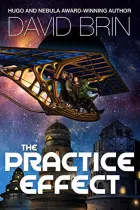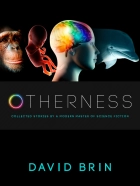Citizen engagement is essential to our fast-changing civilization. I’ve spoken often about how, even while we’ve seen an increasing trend toward professionalization in all aspects of society, we’re also experiencing a counter-trend toward a vivid Age of Amateurs, when professionals in all fields will be augmented by curious, engaged and knowledgeable citizens.
For those passionate about expanding their horizons, many organizations offer a range of opportunities for crowd-sourced research. Interested individuals with a bit of spare time can collaborate with professional scientists and actively participate in investigations, helping to address real world problems. Despite lack of formal credentials, dedicated citizens can provide eyes and ears on the ground in widespread locations. They may take photos or measurements, collecting data that is of use to researchers monitoring wildlife or environmental changes – or even help with astronomical observations. Opportunities also exist to evaluate data online – and can be done from the comfort of one’s home.
Certainly individuals have long participated scientific discovery, especially in astronomy and the natural sciences. Volunteers are avid participants in regional wildlife surveys, such as the Great Backyard Bird Count. Others help monitor track seasonal butterfly migration. But now technology, such as ubiquitous cameras and smartphone sensors, have enabled high quality data collection and recording tools to be widely available to amateurs.
As a teenager, growing up in 1960s Los Angeles, I participated in the American Association of Variable Star Observers (AAVSO), gathering data for professional astronomers, one of countless such groups that you might learn about via the Society of Amateur Scientists. In my novel Existence, I portray this trend accelerating as individuals and small groups become ever more agile at sleuthing, data collection and analysis – forming very very smart, ad-hoc, problem-solving “smart mobs,” assisted – or ‘aissisted’ by increasingly potent tools of artificial intelligence. These trends were also portrayed in nonfiction, as in The Transparent Society. But in the years since those books were published, reality seems to be catching up fast.
And hence this updated version of my citizen science postings, for 2023 (a date that few of us, in the 1960s, ever thought we’d see!)
Opportunities abound
For starters, the U.S. government website CitizenScience.gov helps coordinate and catalog crowdsourcing and citizen science opportunities across the country. Their online database lists nearly 500 projects, which range from reporting on the effects of landslides or wildfires – to monitoring populations of wild animals such as condors, raptors, bats, or monarchs. The Stormwater Management Research Team (SMART) empowers students to conduct research on water quality in their local watershed, measuring turbidity levels, temperature or saline content.
The website SciStarter provides a clearinghouse to match willing volunteers with ongoing research projects. Citizens can track plant diversity, collect sightings of a newly introduced predatory beetle, or help monitor the abundance of microplastics in their local environment. Some projects can be completed online, such as Dark Energy Explorers, where citizens help astronomers classify galaxies, in order to better understand the distribution of dark matter. Others use volunteers to monitor trail cam footage and help identify wildlife species caught on camera.
Another useful site is Zooniverse, which also helps match volunteers with ongoing research projects. These range from Cloudspotting on Mars to helping astronomers identify elusive “Jellyfish” galaxies in large sky surveys. They may help track honeybee diversity or participate in a killer whale count.
Interested in how brain cells communicate? The Synaptic Protein Zoo needs volunteers to help analyze data on complex protein clusters. This research may shed light on neurodegenerative diseases such as ALS and Parkinsons. Don’t know where to start? Training is provided. Similarly, The online game Foldit allows gamers to compete to fold protein structures to achieve the best scoring (lowest energy) configuration.
Looking beyond… volunteers can help astronomers classify galaxies at Galaxy Zoo, learn to map retinal connections in the brain at EyeWire, explore the surface and weather of Mars’ south polar region with Planet Four – or help track birds by tagging time lapse images from the Arctic with Seabird Watch.
The National Oceanic and Atmospheric Administration – NOAA – also offers crowdsourcing opportunities, where individuals can participate in categorizing whale sightings, monitoring marine debris – or they can help track tidepool life, or keep an eye on phytoplankton levels to fight harmful algal blooms.
Just One Ocean has sponsored a global initiative – The Big Microplastic Survey – which will call upon citizen science to gather data about the distribution and prevalence of microplastics in the world’s oceans, rivers, lakes, and coastal environments, in an attempt to better understand how these particles enter the food chain and impact biodiversity.
And of course, research takes money. In an era of decreased or uncertain research grants, scientists may turn to crowdfunding to support their projects. The SciFund Challenge trains scientists to more effectively connect and communicate with the public to run a successful crowdfunding campaign. “The goal? A more science-engaged world.” One advantage to researchers is that they can receive funding in a matter of weeks, rather than months. Grant-writing takes a substantial commitment of time and effort for most university researchers.
Dr. Jai Ranganathan, co-founder of the SciFund Challenge, has asked: “What would this world look like if every scientist touched a thousand people each year with their science message? How would science-related policy decisions be different if every citizen had a scientist that they personally knew? One thing is for sure: a world with closer connections between scientists and the public would be a better world. And crowdfunding might just help to get us there.”
Another platform that helps raise money to crowdfund scientific research is experiment.com , which operates much like Kickstarter. Researchers post projects with moderate monetary goals, in areas ranging from anthropology to neuroscience and earth science. Their byline: “Curiosity is contagious. Every project has a story to tell and an audience that will want to hear it.”
Backers may receive periodic updates on their chosen projects and direct communication with researchers. They may also receive souvenirs, acknowledgment in journal articles, invitations to private seminars, visits to laboratories or field sites, and occasionally, naming rights to new discoveries or species. Citizen science offers a wonderful opportunity for schools to actively engage students of all levels with STEM projects – and spark imagination and scientific thinking.
Whatever your level of involvement, you can have the satisfaction of participating in humanity’s greatest endeavor. In an era when political factions and media empires are waging relentless “war on science” this trend toward active participation — or providing some financial support — is the surest way to help support an active, vigorous, future hungry and scientific civilization.




















 In coming years the screenplay, as such, may become obsolete, both to sell an idea for filming and as a working production tool. Instead, a small team consisting of the writer, a computer-animator, a photographic specialist, a musical specialist and some voice actors might team up before hitting the studios with a pitch. Using animatics and integration technologies that already exist, such a team might create a complete 90 minute cinematic story wherein animated characters act and speak upon sets that are computer-merged from still-photos or video pans.
In coming years the screenplay, as such, may become obsolete, both to sell an idea for filming and as a working production tool. Instead, a small team consisting of the writer, a computer-animator, a photographic specialist, a musical specialist and some voice actors might team up before hitting the studios with a pitch. Using animatics and integration technologies that already exist, such a team might create a complete 90 minute cinematic story wherein animated characters act and speak upon sets that are computer-merged from still-photos or video pans.
 (The more famous fire goddess — Pele-honua-mea (“Pele of the sacred land”) — lives on the more flamboyant (especially right now), active volcano Kilauea. Although the two goddesses are often conflated as the same, they were said to have been bitter rivals.)
(The more famous fire goddess — Pele-honua-mea (“Pele of the sacred land”) — lives on the more flamboyant (especially right now), active volcano Kilauea. Although the two goddesses are often conflated as the same, they were said to have been bitter rivals.)
 But it’s more than that. A strong correlation shifts the Burden of Proof. When we see a strong correlation, and the matter at-hand is something with major health or safety or security implications, then we are behooved to at least begin taking preliminary precautions, in case the correlation proves to be causative. Sometimes the correlation is later demonstrated not to be causal and a little money has been wasted. But this often proves worthwhile, given long lead times in technology.
But it’s more than that. A strong correlation shifts the Burden of Proof. When we see a strong correlation, and the matter at-hand is something with major health or safety or security implications, then we are behooved to at least begin taking preliminary precautions, in case the correlation proves to be causative. Sometimes the correlation is later demonstrated not to be causal and a little money has been wasted. But this often proves worthwhile, given long lead times in technology. Those who use “Correlation is not the same as causation” as a magic incantation to dismiss all fact-using professions are fools holding a lit match in one hand and an open gas can in the other, screaming “one has nothing to do with the other!”
Those who use “Correlation is not the same as causation” as a magic incantation to dismiss all fact-using professions are fools holding a lit match in one hand and an open gas can in the other, screaming “one has nothing to do with the other!”
 t is this fevered spite against all fact-users that makes our current civil war completely unrelated to the old-hoary-lobotomizing “left-right” political “axis.” When all outcomes and metrics of US health and yes, economics and capitalism do vastly better under democrats, fact users become Enemy #1. And that’s ALL fact-users, now including even the FBI, the Intelligence Community and the U.S. Military Officer Corps. (Look up the term “
t is this fevered spite against all fact-users that makes our current civil war completely unrelated to the old-hoary-lobotomizing “left-right” political “axis.” When all outcomes and metrics of US health and yes, economics and capitalism do vastly better under democrats, fact users become Enemy #1. And that’s ALL fact-users, now including even the FBI, the Intelligence Community and the U.S. Military Officer Corps. (Look up the term “











